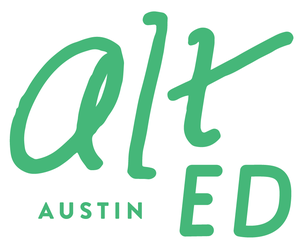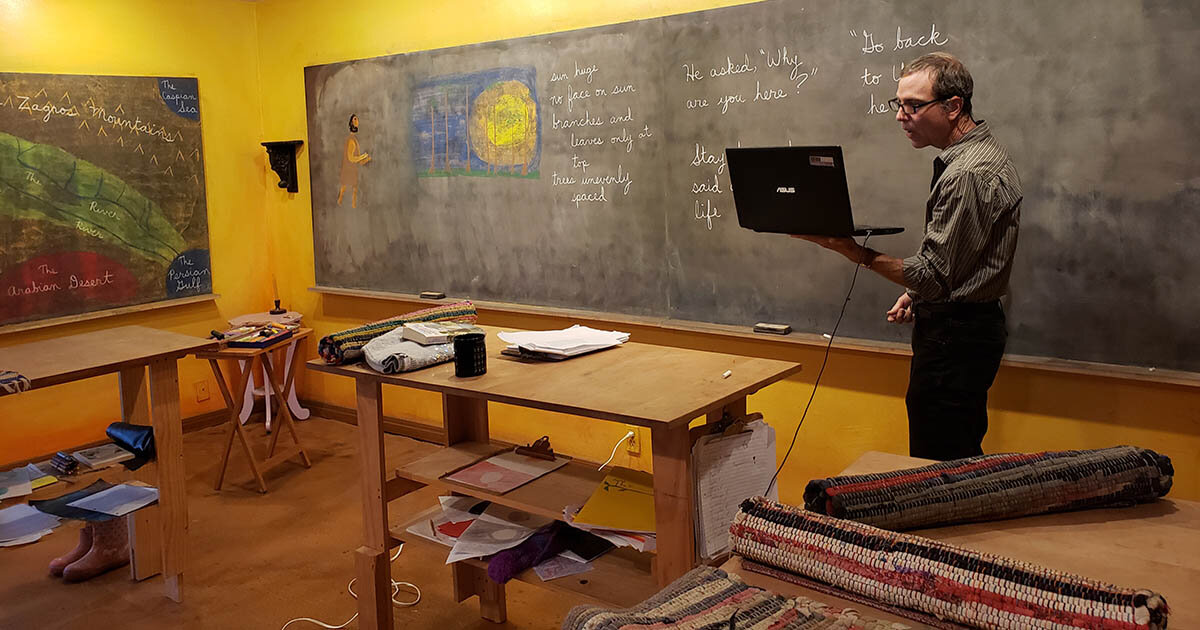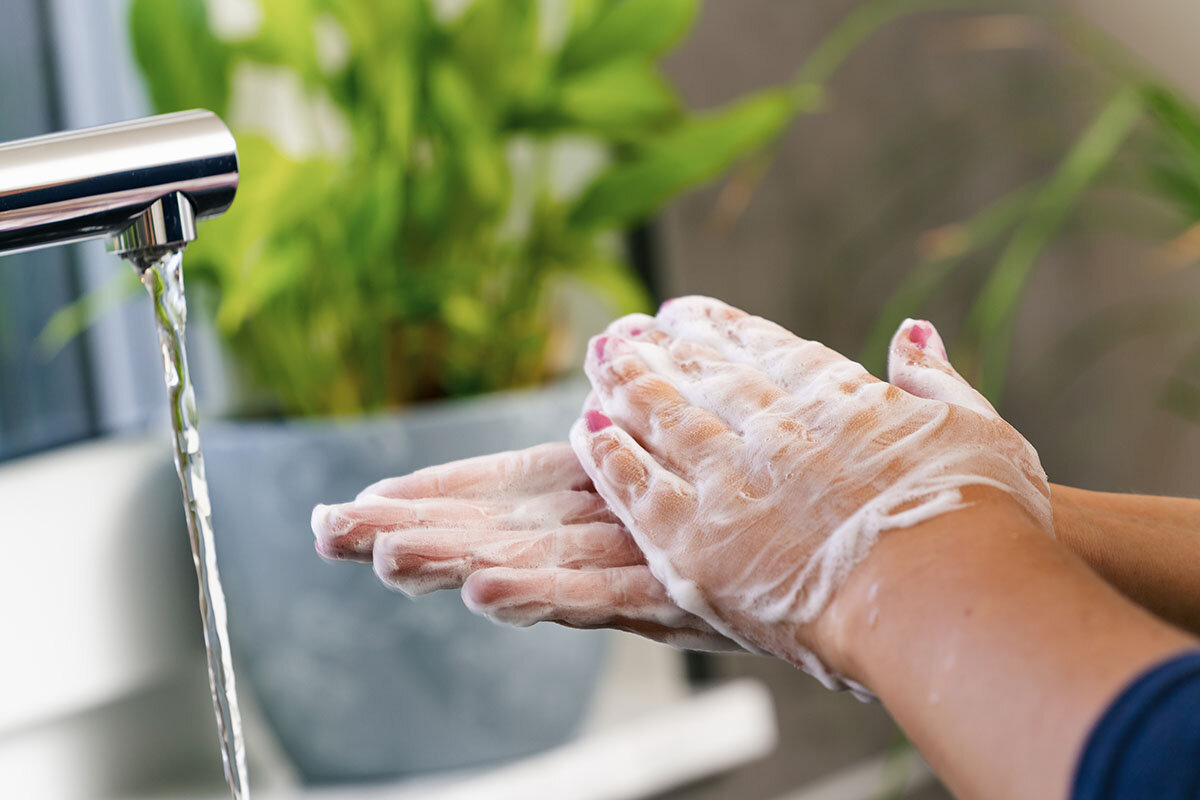Social-Emotional Learning and the Healing Classroom: The International Rescue Committee emphasizes the importance of creating a “healing classroom” that provides for the social and emotional needs of kids in emergencies. In keeping with the approach of many alternative schools, our schools-at-home should be supportive, comfortable environments where kids feel safe enough to follow their natural inclination to learn. Often, that means de-emphasizing academic expectations and emphasizing anything that promotes mental and emotional health.
As Doucet and his colleagues put it, school can be a place where kids “are empowered to lead their authentic lives.” Distance from friends and beloved teachers creates anxiety and stress that needs to be acknowledged. Like most of the schools we’ve heard from at Alt Ed Austin, Roving Learners is committed to providing an outlet for anxiety. They bring kids together in restorative circles twice a day and work one-on-one with students to relieve the stresses inherent in this new situation.
We’ll talk more about Austin’s alternative school community and its approaches to social-emotional learning in the next article in this series.
Instead of “Getting Back to Normal,” Getting Better: Educators and policymakers across the world are viewing the current moment as an opportunity to make schools better when kids return and to be better prepared for the next crisis. Some of the ways folks are rethinking the future of education to serve all students’ needs include things that we can work on right now with our kids at home:
Finding better avenues for peer-to-peer connections for both kids and educators. Most students today are experts at staying in contact via social media of all kinds, but transitioning the tools they use regularly for fun into tools that can deepen and enhance learning is a challenge for educators. One piece of advice from education expert Erika E. Smith that applies to both educators and parents is to allow students to build connections on their own. They may want to use online forums or just exchange contact information without involving adults, and that will often allow for more comfortable sharing of ideas and information. Educators and parents have the same need to share ideas and help each other. Nishi Andra shared a touching story with me about teachers in other countries creating video lessons in the Rohingya language to help and support teachers in refugee camps.
Bending and breaking old rules that clearly don’t work or don’t serve kids’ needs. Some schools are saying it’s okay for academic lessons and specific content expectations to lapse right now and planning to develop summer school courses for catching up later. Many states, including Texas, are canceling standardized tests, and colleges are waiving admissions requirements for SAT and ACT scores—and using the moment to reconsider whether they will be needed in the future.
Building stronger, deeper relationships between families and schools. In a national survey last year, only half of parents reported communicating with their child’s teacher outside of formal parent-teacher conferences and less than 75 percent were helping kids with homework. Those statistics may change as a result of the changes happening in almost every family right now.
Making sure that free, high-quality technology and Internet connectivity is available to everyone, or if that’s not possible, investing in alternatives. Technology is a pivotal aspect of almost every discussion of the learning that’s taking place at home right now. At the same time, we know that many students don’t have access to the hardware they need or reliable Internet connections. Providing those essentials is a challenge for public policy in the coming years. At the moment, though, a lot of communities are finding that some older, tried-and-true technologies, including public radio and TV, can bring content to almost every student.
In an op-ed about the impact of the Korean conflict of the 1950s on education in South Korea, Woody Paik emphasized crises as opportunities for growth and improvement, and schools as tools for recovery. The world can become a classroom and a laboratory for kids, parents, schools, and communities to experiment and explore new paths for learning. In the next three articles in this series, we’ll see how more than 30 of Austin’s alternative schools are doing just that.
To Learn More:
Armand Doucet, et al., “Thinking About Pedagogy in an Unfolding Pandemic,” March 19, 2020
Anya Kamenetz, “What Do Students Need to Recover When School Closes for Months?" NPR Morning Edition, April 1, 2020
Woody Paik, “What the U.S. Can Learn About Education during Crisis from South Korea’s Wartime Example,” Hechinger Report, April 9, 2020
Reishan Richards and Stephen J. Valentine, “How to Keep School Rhythm and Routines for Young Children at Home,” EdSurge, March 17, 2020
Valerie Strauss, “If Online Learning Isn’t Working for Your Kids, Try Public Television,” Washington Post, April 14, 2020
Jamie Weiss-Yagoda, “Education Tips for Parents During the Coronavirus Crisis,” RESCUE April 3, 2020
Rebecca Winthrop, “COVID-19 and School Closures: What can countries learn from past emergencies?” Brookings Institution, March 31, 2020
Rebecca Winthrop, “COVID-19 is a Health Crisis. So Why is Health Education Missing from Schoolwork?” EdSurge April 3, 2020
Websites:
PBS Learning Resources
Learning Keeps Going
Videos:
“How Learning Changes When School Happens at Home and Online,” PBS News Hour, March 31, 2020.
“‘You’re Not Alone’: How Teenagers Are Dealing with Social Distancing,” PBS News Hour, April 15, 2020.
“Teaching Special Education Online During COVID-19,” eLuma Online Therapy, March 19, 2020.
“Sesame and the IRC join forces to help Syrian refugee children,” CBS 60 Minutes, November 17, 2019.
by Shelley Sperry | Sperry Editorial

































